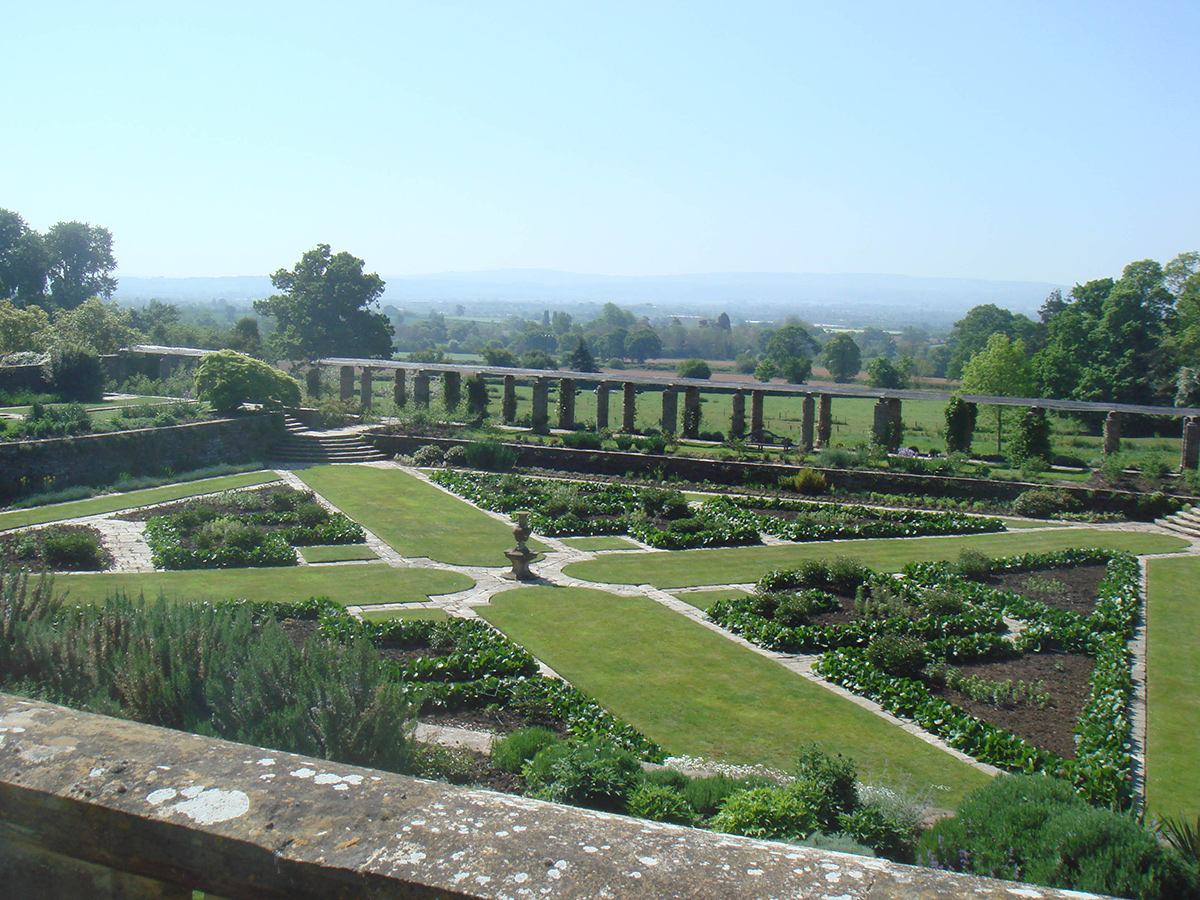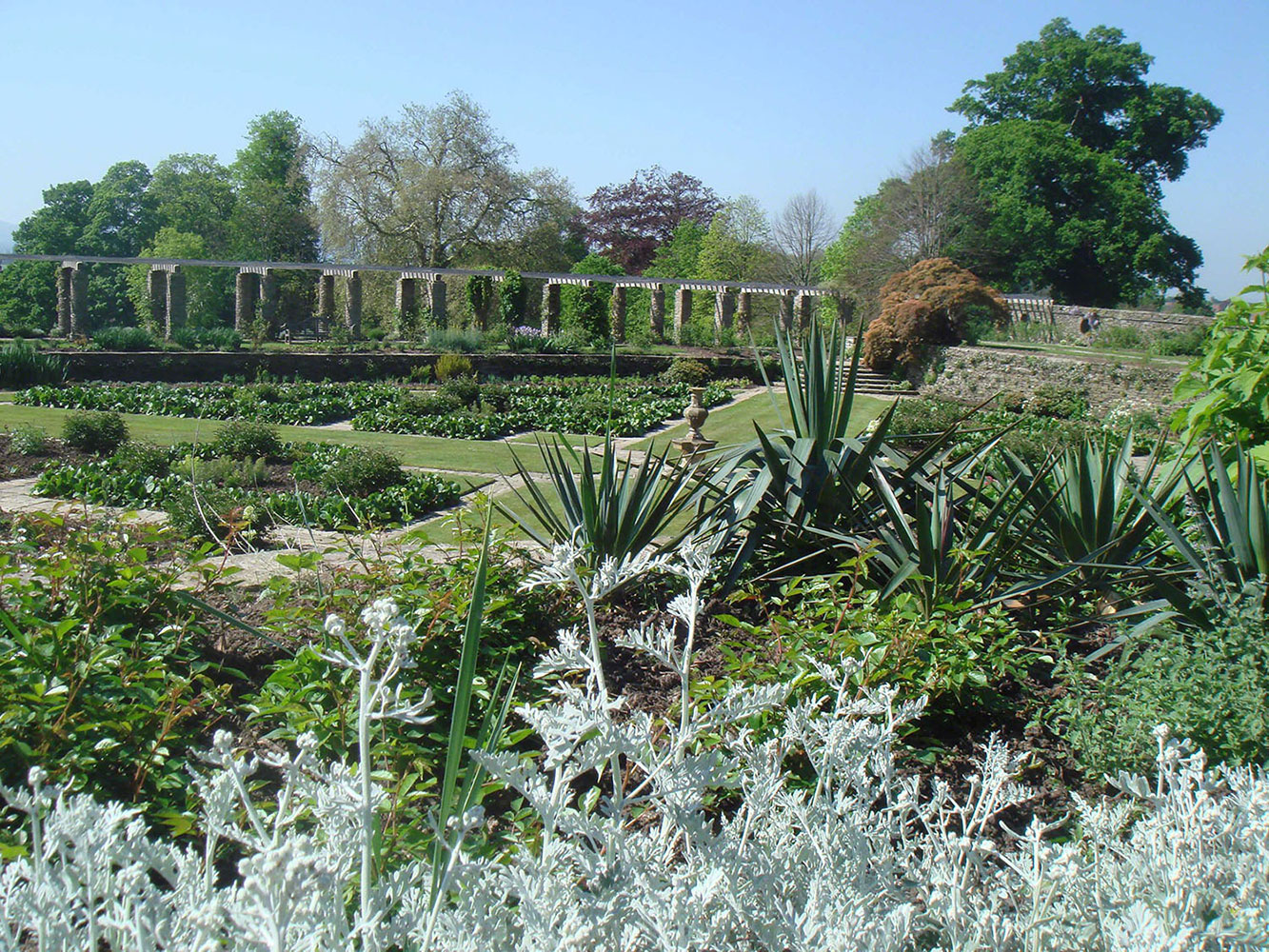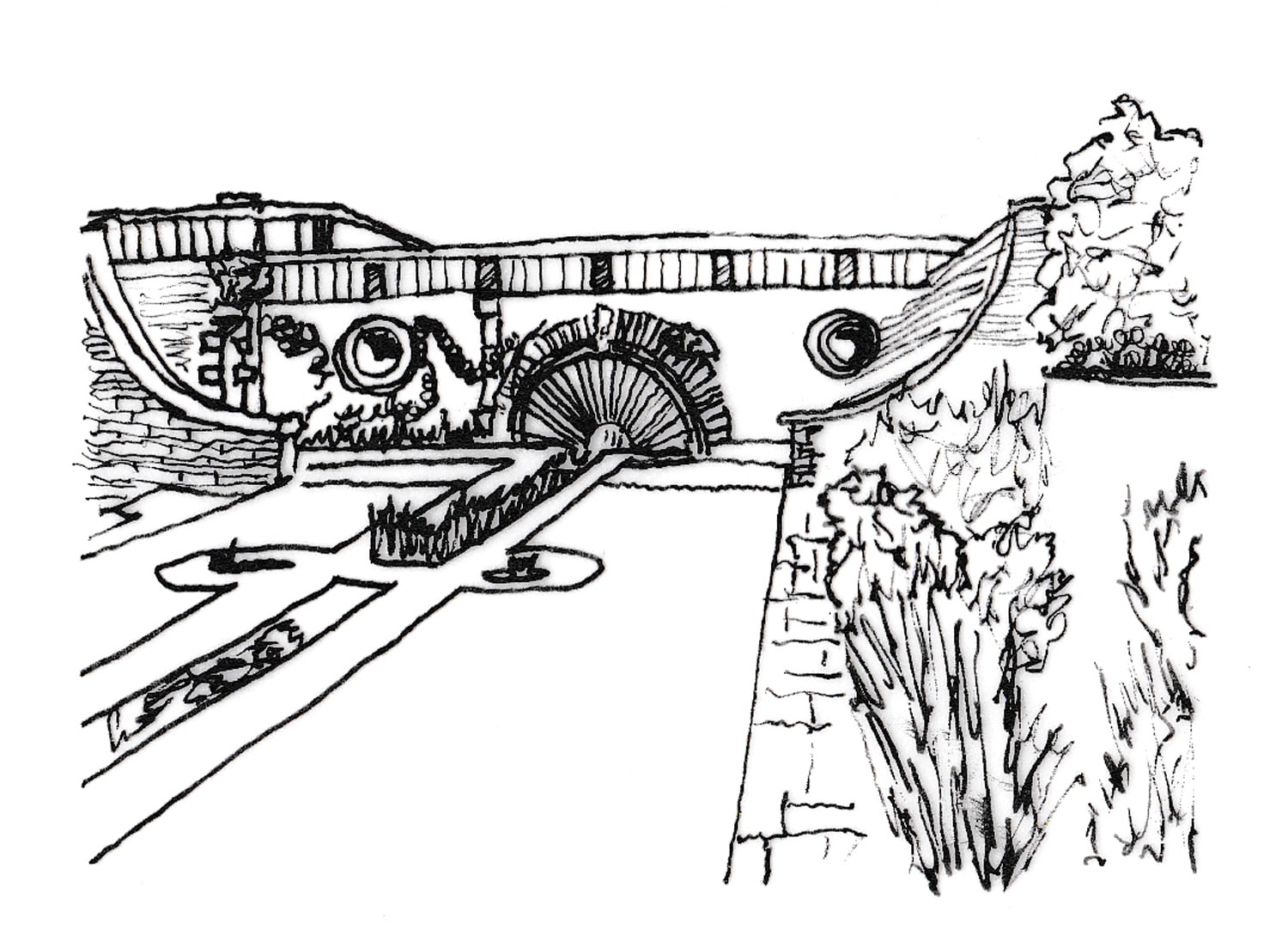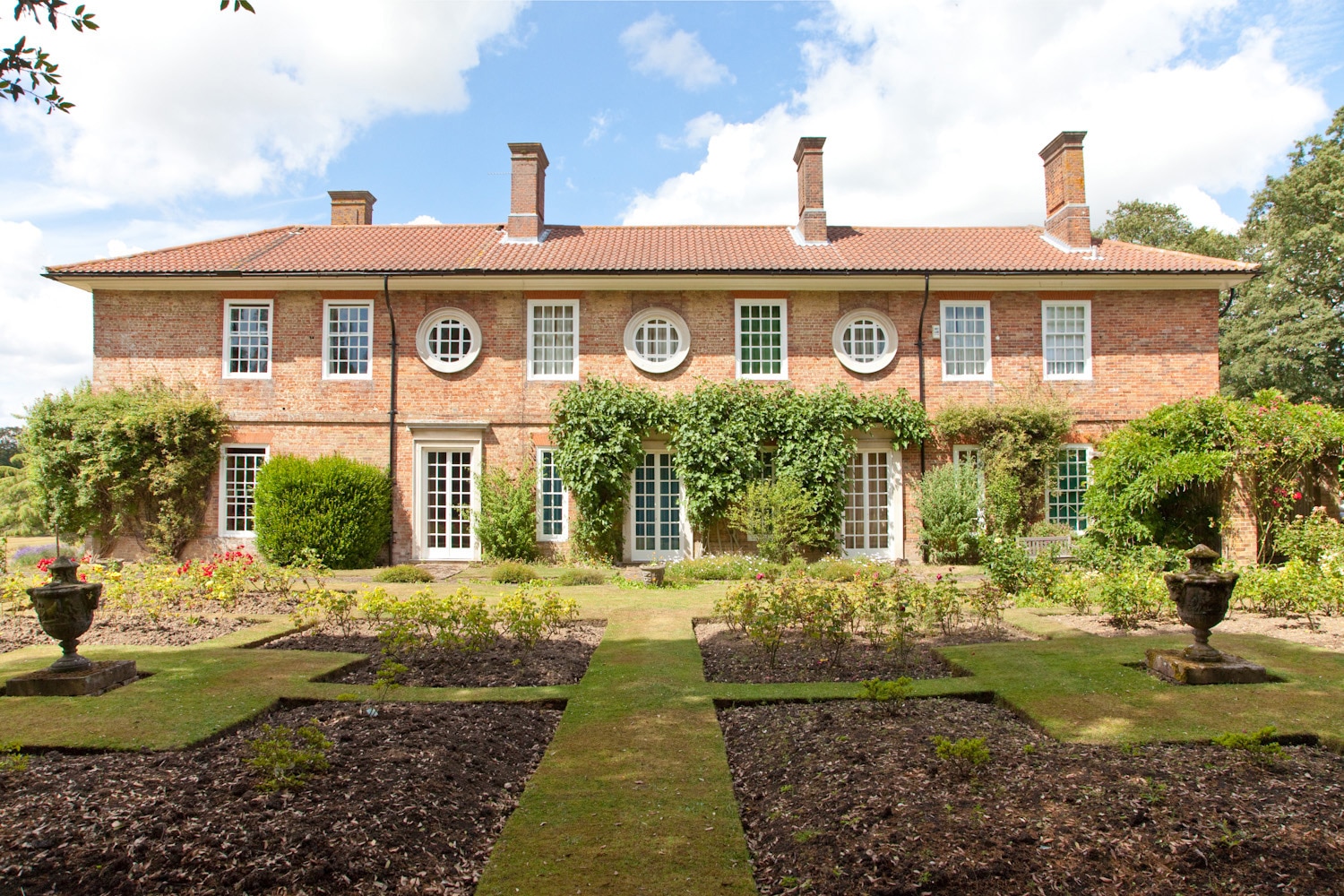 David Lewis
David LewisDescription
This garden was added to an existing house which only possessed a wide terrace on its south front, with parkland meadows falling away to a magnificent view, a setting which must have stirred Gertrude Jekyll’s memories of Italian gardens. Added to that is Lutyens’s love of geometrical games, spiced with an irresistible urge to upstage the gaunt house and almost ridicule its harshness; this diversionary exercise being completed with the Orangery. The central feature of the whole design is the Rotunda, built of local sandstone, which is also employed in the rough-hewn stone walls and the finer paving of the Great Plat and Rill terraces. The restoration of Gertrude Jekyll’s planting affords a perfect insight into their partnership. The Grey Walk, along the middle terrace level, has drifts of lavender, catmint, pinks, her favourite blue grass, elymus, and the cottage-garden soapwort. The stone-framed beds of the Plat are edged with bergenias and filled with small bush roses, peonies, lilies and delphiniums – the colours are predominantly creams and pale blues, with a succession of shades of pink which tone beautifully with the pinkish-hue of the soil and stones. The Rill Borders sport glorious clumps of foxgloves, hollyhocks, campanulas, oriental poppies, echinops and red hot pokers, with patches of cloudy gypsophilia and edgings of saxifrage and stachys; one of the best plant relationships she ever found was lilies and the saxifrage, London Pride. The closely-related hostas, asphodels and hermocallis (day lilies) were all her special favourites and are all well-represented, as are the aromatic evergreens, choisya, myrtle and cistus. (Amery et al., 1981, cat no.143)The famous gardens designed by Edwin Lutyens in 1904 for Edward Portman and planted by Gertrude Jekyll have since 1995 been supplemented by a landscape created after 1750 by Coplestone Warre Bampfylde, retrieved from forestry by the Hestercombe Trust…
formal gardens. Lutyens’s largest single garden design. Below the balustraded upper terrace of 1875–7 he excavated the parterre or Great Plat. The descent is managed via side additions to the terrace and steps down to raised walks. Green lawn contrasts with silver-grey paving in geometric patterns. Narrow, rather Moorish watercourses characterize the layout, the first in the rose garden, w of the terrace. e of the terrace is the Rotunda, a circular space to manage changes of direction. A round pool within high walls of local Morte slate with highlights of Ham stone: an open-pediment niche and circular dishes, echoing Montacute. Balustrades overlook the raised walks from high terraces, at the base of which hemispherical recesses frame circular pools. From these pools narrow channels bisect the raised walks, running straight to vanish over the far ends. Paving borders each channel, looped occasionally around tiny flanking circular pools. At the far end is a lower terrace with a 230-ft (70-metre) pergola, overlooking fields below. The raised walks and lower terrace frame the Great Plat itself. Its lawns form a diagonal cross within a square, the triangles and borders planted. All this is formal, relieved by the planting. By contrast, the e opening from the Rotunda reveals a terrace overlooking a natural garden. Broad steps drop to Lutyens’s grand orangery of 1906–8, in his individual interpretation of late Wren or Vanbrugh. Ham stone ashlar interspersed with slate; red pantiles and white woodwork complete the sensuous colour. On each end, fat festoons drop from deep open pediments to the keystone of a tall arched doorway. Corner pilasters are strikingly rusticated in slate. These pilasters are repeated on the main front, framing outer bays with ashlar niches. In the centre are three more tall arches (here French windows), separated by two broad piers pierced for doorways, setting a Palladian theme within the Roman rhythm. Spandrel dishes above the doorways. Barrel-roofed white interior punctuated by stone basins and fireplace. Matching steps rise e to an intricately paved Dutch Garden on a vaulted terrace. A Chinese door in a rusticated n doorway here allows a glimpse of Bampfylde’s landscape. Lutyens altered the c18 water mill and barn to the e, whose pantiled roofs make a rustic backdrop to the gardens. (Orbach & Pevnser, 2014, pp.353-5)
Bibliography
Amery, C., Richardson, M. and Stamp, G. (1981) Lutyens, the Work of the English Architect Sir Edwin Lutyens (1869-1944): Hayward Gallery London, 18 November 1981-31 January 1982. London: Arts Council of Great Britain.Orbach, J. and Pevsner, N. (2014) Somerset: South and West. The Buildings of England. New Haven: Yale University Press.
Also Cited In
Gradidge, R. (1982) Edwin Lutyens: Architect Laureate. London: Allen & Unwin.Weaver, L. (1913) Houses and Gardens by E L Lutyens. London: Country Life.
Pevsner, N. (1958) South and West Somerset. The Buildings of England. Harmondsworth: Penguin
HUSSEY, C., 1927. COUVNTRY HOMES GARDENS OLD & NEW: HESTERCOMBE–I SOMERSET. Country Life (Archive : 1901 – 2005), 61(1578), pp. 598-605.
HUSSEY, C., 1927. COUNTRY HOMES GARDEN’S OLD & NEW: HESTERCOMBE–II. SOMERSET. Country Life (Archive : 1901 – 2005), 61(1579), pp. 638-645.
T, 1908. COUNTRY HOMES GARDENS OLD & NEW: HESTERCOMBE.-I. SOMERSET, THE SEAT OF THE HON. … EDWARD W. BERKELEY PORTMAN. Country Life (Archive : 1901 – 2005), 24(614), pp. 486-494.
T, 1908. COUNTRY HOMES GARDENS OLD & NEW: HESTERCOMBE. –II. SOMERSET, THE SEAT OF THE HON. … EDWARD W. BERKELEY PORTMAN. Country Life (Archive : 1901 – 2005), 24(615), pp. 522-530.
Listing Grade
IListing Reference
1060514Client
Hon E W Portman



